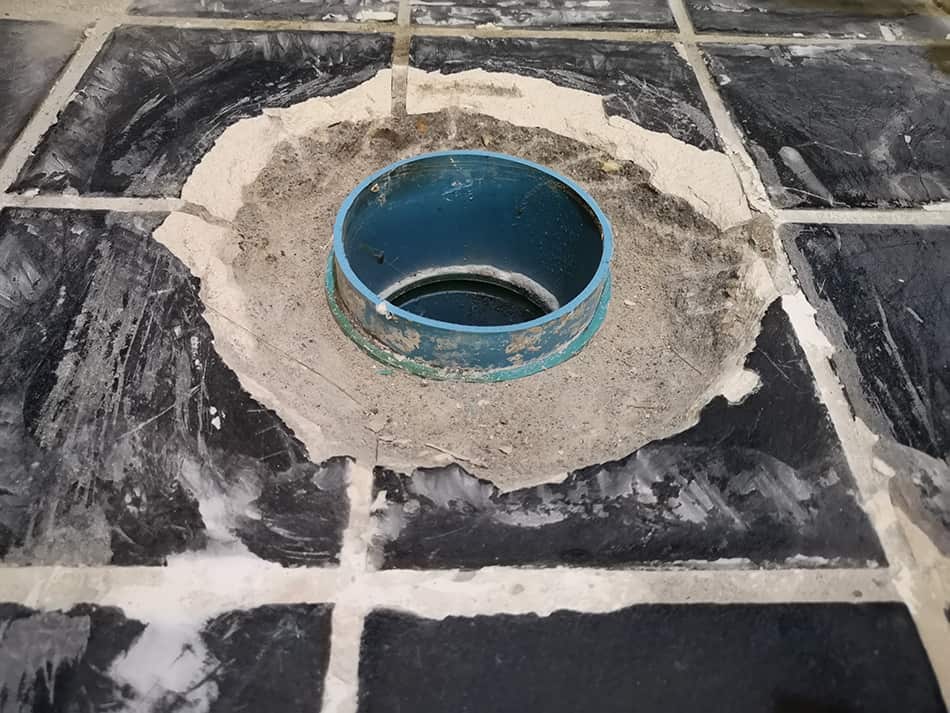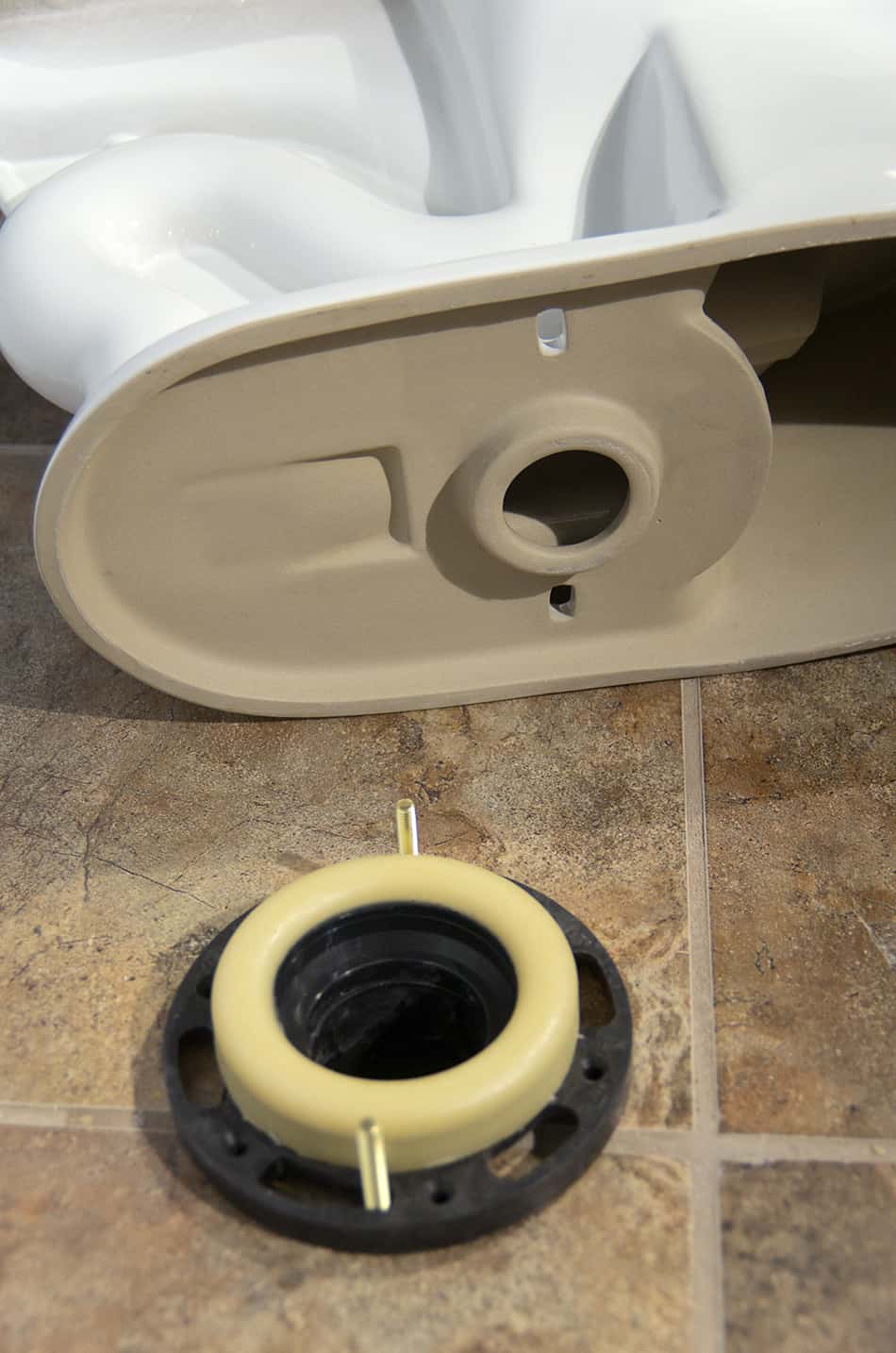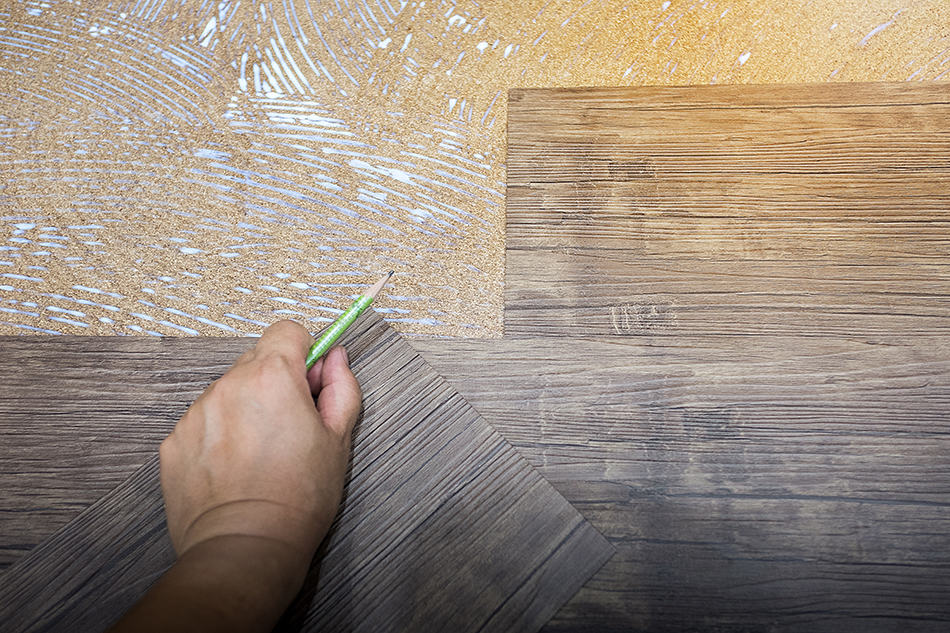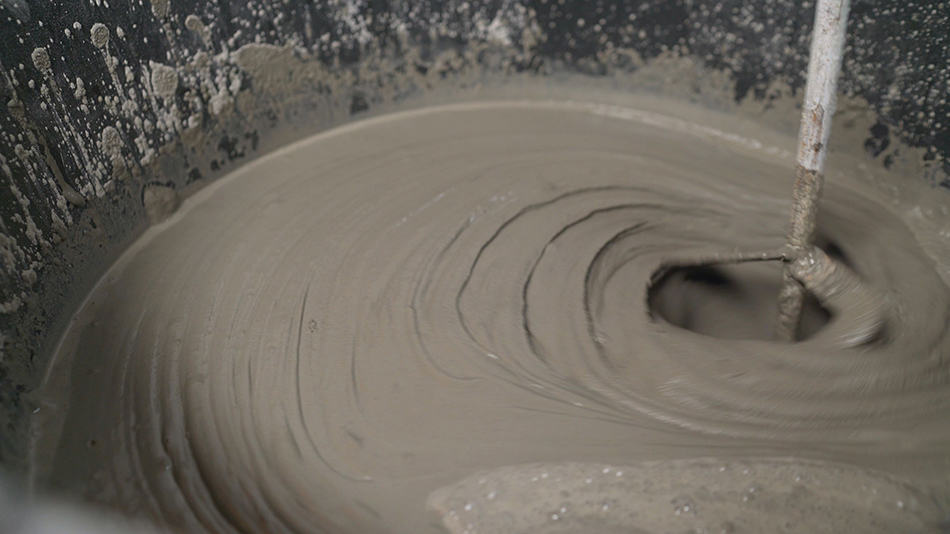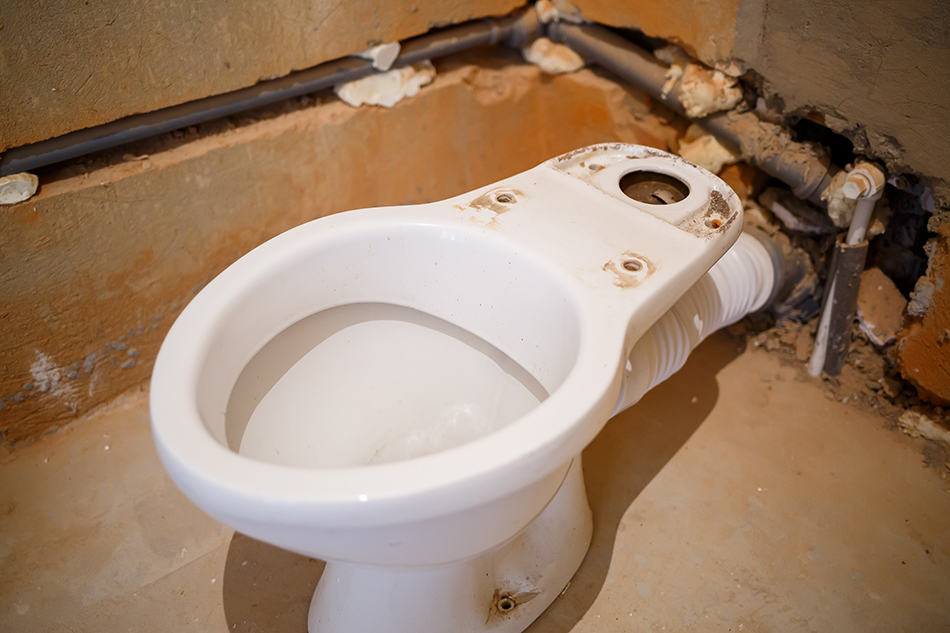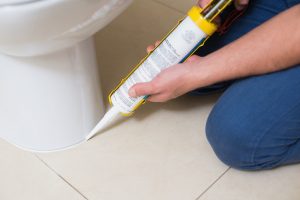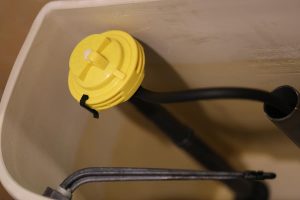If your toilet flange is too high, your toilet may rock back and forth when it’s used. You may also notice water leaks from the flange. Over time, the rocking and leaking can either break or warp the floor. A leaking toilet flange may rot the subfloor and cause mildew or mold.
When this problem arises, there are different methods you can use to fix it. Keep reading to learn more.
What Is a Toilet Flange, and Do You Really Need It?
Before we discuss how to fix your high toilet flange, let’s delve further into what it is first.
A toilet flange joins the toilet bowl to the septic tank pipe. This device comes in different materials like iron or PVC. It is bolted to the bathroom floor to ensure the toilet doesn’t leak when in use.
The flange essentially functions as a funnel that channels the wastewater into the sewer pipe and to the septic tank. But aside from its primary purpose of channeling the water, the flange is also utilized to raise the toilet.
If your toilet flange is too high, there are some changes you can make to lower this device. Keep reading to learn more…
How to Fix a High Toilet Flange
Raise the Bathroom Floor
Raising the bathroom floor is an effective way of adjusting the height of your toilet flange. Depending on how much height you want to add, a backing board is best placed underneath the tile in order to provide adequate support. An additional layer of tile is all that’s needed to raise the floor, or you may build risers, such as plywood before tiling the floor. This lets the toilet sit on the riser properly. You also have the option of using cement boards to increase toilet height.
In the following paragraphs, we’ll explain how you can raise the bathroom floor using the above-mentioned ideas:
Method 1: Plywood for Floor Buildup
Step 1: For this task, you’ll need a circular saw. Cut the plywood according to how much you will be using. Measure the floor area to cut to applicable sizes.
Step 2: Now measure the distance between the center of the toilet flange and the nearest wall. Use a pencil to get this measurement into the first piece of plywood. The next measurement must be the distance between the opposite wall to the toilet flange and towards its center. Write this measurement into the second piece of plywood.
Step 3: After you’ve measured the distances, add half an inch and draw a circle using a compass or round cup. The circle can then be cut using a woodcutting tool.
Step 4: It’s now time to fit each plywood onto the toilet flange and ensure it is snugly fit. Secure the plywood with glue or screw. You’re now ready to position the toilet bowl.
Method 2: Cement Board
If the gap between the bathroom’s subfloor and the flange’s outer circle is only minimal, you can fill the gap using a cement back board with a tile on top.
The advantage of using a cement backboard is that there is no chance of swelling due to water leaks plus it is a stable solution for the flange. After all, swelling can cause the tiles to crack and the replacement will cost you so you can avoid the hassle by raising the floor using a cement back board.
Follow these steps to learn how it’s done:
Step 1: Measure the floor where you would like to raise the subfloor. This will determine how many pieces of cement back boards you’ll need.
Step 2: Measure the radius of the flange to create a circular shape on the backboards. You will need a pencil to draw a circle before making a hole.
Step 3: Put together 4 pieces of cement backboards to make a bigger square. Draw the circle at the center of the bigger square and add half an inch to the measurement. Now cut the circle and make sure the backer board is snugly fit around the toilet flange.
Step 4: Spread the cement evenly on the entire floor that’s to be raised. Once you’ve done this, set the boards while the cement is still wet. Secure the backboards with corrosion-resistant screws. Make sure the cement is sealed around the outer flange as well as in between the backboards.
Step 5: Lastly, to set the tiles over the subfloor, spread tile glue over the boards and make sure the tiles close the gap properly. You can then screw the flange on the floor and move on to the toilet bowl installation.
Use Grout
Grout is another excellent material to use when the toilet flange is too high. To use this tool, follow these steps:
Step 1: Start by mixing the grout. Follow the instructions on the package or put a small amount in a container and add water in a 6 grout to 1 water ratio. This will ensure you’ll have enough grout to work with.
Step 2: Remove your toilet and put it on four rubber shims. The shims must prevent your toilet from moving while you’re grouting around the flange.
Step 3: Now, take the mixed grout and fill the gap with it. Do this all around the toilet. Wait for 24 hours for the grout to dry.
Step 4: Once the grout has dried fully, remove the rubber shims. They may be a little difficult to remove, but with a little force, they will come out.
Step 5: After removing all the shims, all the gaps where you removed the shims must be grouted.
Step 6: Finally tighten the bolts located at the bottom of the toilet so that it is fully secure.
Tip: during the grout drying process, you can increase the drying process by spraying water on the grout. Use a spray bottle and add moisture as much as you can. This will help the mix become stronger as it sets.
Have you tried all the above methods and still aren’t happy with the flange height? Then, consider replacing your toilet and the flange to fix the problem.
Install A New Toilet and Flange
If your toilet flange is still too high, the last option is to replace it. To do this, you need to remove the toilet, the old flange, and the pipe fitting.
When installing a new toilet and flange, the first and most important thing you must determine is the correct height of the flange. Once you’ve removed the old toilet, measure the height of the flange from the top to the floor. The ideal flange height should be a quarter inch above the floor. This will allow the wax ring to be fitted for sealing the flange. If your bathroom floor is recently tiled, then your toilet flange is likely to be higher than the desired level.
If there isn’t enough clearance from the bathroom floor, add a flange extender. This tool is easy and quick to install and commonly comes as a quarter or half an inch size. The job of a flange extender is to raise the height of the flange and most come with long bolts.
When buying a new toilet flange, make sure it comes with a water-tight seal to prevent leaks. Install the new flange by inserting it into the pipe before drilling four holes into the floor in order to secure the flange. Finally, place the new toilet onto the flange and tighten the bolts to secure it into place.
How Long Does A Toilet Flange Last?
A toilet flange has no definite length of time to last. As long as it is installed properly, secured to the floor, and completely level, it should last up to 25 years or longer.
If you notice water leaking from the base of the toilet, the main culprit may not be the toilet flange. Check the wax ring to see if it has come loose. The wax ring should last up to 25 years, but over time, it can deteriorate. To replace the ring, remove the toilet and install a new wax ring before putting the toilet back.
How Much Clearance Space Does a Toilet Flange Need?
Since standard drywall is around half an inch thick, you should set the flange at least 15 inches from the center of the device to the wall framing. The average distance from the back wall is 12.5 inches so this will provide you with enough clearance space. Toilet flange dimensions are crucial to ensure proper installation and to avoid any spacing issues.
Conclusion
A high toilet flange can cause water leaks and a rocking toilet when used. Both the rocking back and forth and the leaking can over time warp or break the bathroom floor. A leaking toilet flange may also rot the subfloor and lead to mold or mildew. Repairing a flange that’s too high isn’t an expensive or complicated task.
Using any of our above methods, such as grouting or raising the subfloor should fix this problem. But if you’re not into DIY, it’s best to call a licensed plumber. The sooner you get this issue looked into, the fewer repairs you’ll have to do, thus saving you money and hassle.
